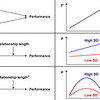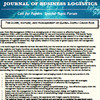 Many business owners will have come across the term business continuity, and many supply chain owners will have come across the term supply chain risk management. However, the term supply chain continuity is still a rather unexplored topic, gathering mere 45000 search results on Google, while business continuity has no less than 10 million results. But isn’t that what supply chain risk management is all about, namely supply chain continuity? Well, here’s a book that most certainly thinks so: A Supply Chain Management Guide to Business Continuity by Betty A Kildow, showing how a well-functioning supply chain is the key to a well-functioning business.
Many business owners will have come across the term business continuity, and many supply chain owners will have come across the term supply chain risk management. However, the term supply chain continuity is still a rather unexplored topic, gathering mere 45000 search results on Google, while business continuity has no less than 10 million results. But isn’t that what supply chain risk management is all about, namely supply chain continuity? Well, here’s a book that most certainly thinks so: A Supply Chain Management Guide to Business Continuity by Betty A Kildow, showing how a well-functioning supply chain is the key to a well-functioning business.
Business Dis-Continuity
The now classic textbook example of supply chain continuity, or rather “dis-“continuity, is the difference in how Ericsson and Nokia handled a fire in the chip manufacturing plant that supplied both companies. A well-handled supply chain disruption can result in business continuity, i.e. Nokia, while an ill-handled supply chain disruption can result in business dis-continuity, i.e. Ericsson. Building on this as one of the examples in the early pages of the book, Kildow goes on to explain in detail why and how she thinks that business continuity thinking should be part of supply chain management.
BCM+SCM=SCCM
As far as I can see, this is the first book that successfully marries Business Continuity Management with Supply Chain Management, thus creating Supply Chain Continuity Management, although this term is never used in the book anywhere, but that’s what it is; instead, she uses Supply Chain Business Continuity. Personally, I consider straightforward supply chain continuity the better terminology.
Familiar, but better
In its structure, the book more or less follows the same and familiar steps that Steve Cartland used in his book chapter on business continuity in global supply chains:
- Assess the risk
- Analyze the business impact
- Develop business continuity strategies
However, unlike Cartland’s book chapter, Kildow focuses exclusively on supply chains. As such, she is perhaps closer to the Swedish book on How to secure your supply chain that I have reviewed earlier.
Business Impact Analysis
Every enterprise has a supply chain, so Kildow, and within it there are products and services where disruptions could have a huge impact on business continuity. For each of these there are critical business functions that depend on each other, and mapping these functions is important in establishing their level of criticality. Here is Kildow’s suggested evaluation criteria:
- Function involves direct contact with customers
- Function involves direct contact with suppliers, contractors or shippers
Loss of function would
- Directly result in a loss of revenue and profit
- Potentially result in a loss of customers
- Directly result in increased operating costs
- Result in accounts receivable delays
- Delay distribution of products or service delivery
- Delay shipment or receipt of products
- Delay receipt of materials, parts or components
- Negatively impact the company’s current public image
- Result in significant liability exposure or other legal ramifications
- Prevent the company from meeting regulatory requirements
- Lead to imposition of fines or other penalties for failure to fulfill delivery clauses or meet service level agreements
- Result in financial penalties for late payment of accounts payable.
Considering this exhaustive list, there is maybe not much left that is non-critical, but more important than the assessment of everything important is to develop strategies for ensuring continuity, and in the book, Kildow lays out the steps for doing so.
Developing Business Continuity Strategies
When developing strategies, Kildow says, it is important to remember that business continuity is not business as usual, rather it is best possible business under certain scenarios. Thus, all strategies must consider two dimensions:
- when a disaster directly impacts the organization
- when a link in the supply chain experiences a disruption that creates a disaster ripple effect
Once basic strategies are identified, it is necessary to dig into all related requirements for for ensuring continuous business flows such as inventory levels, restocking plans, and the movement of materials, components, parts and products.
Why business continuity?
As an argument for the importance of business continuity, Kildow puts forward the 80-20 rule
- 20% of a company’s stock takes up 80% of its warehouse space
- 80% of sales come from 20% of the sales force
- 20% of an organization’s staff causes 80% of its problems
- 20% of an organization’s staff provides 80% of its production
- 20% of the risks to an organization result in 80% of its disasters
- 80% of a company’s materials come from 20% of its suppliers
- 20% of a company’s suppliers cause 80% of its problems
Practical and hands-on
Not only does Kildow go into details about risks and strategies specific to supply chains, her book also includes a detailed appendix on
- how to assess your own business continuity readiness,
- what specific hazards a supply chain continuity plan should include,
- how to deal with pandemic issues,
- how to set up your continuity team,
- three continuity plan samples, and
- a supply chain/business continuity glossary.
Reference
Kildow, B. A. (2011) A Supply Chain Management Guide to Business Continuity. New York: AMACOM.
Author link
- linkedin.com: Betty A Kildow
Buy this book
Related posts
- husdal.com: Supply Chain Risk versus Business Continuity
- husdal.com: Business Continuity in Global Supply Chains
- husdal.com: How to secure your supply chain












